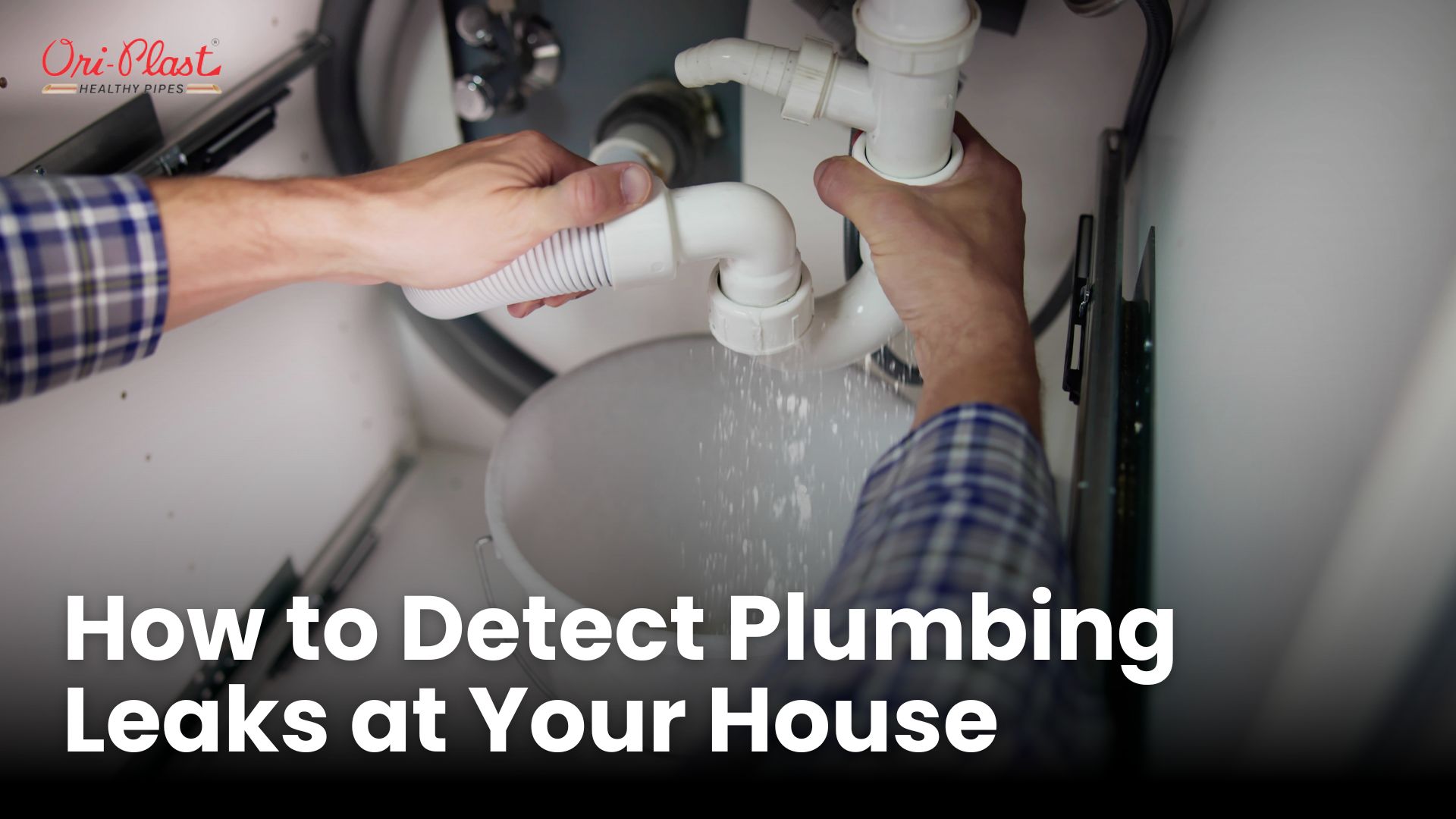Plumbing leaks can cause a lot of expensive damage if left unchecked. Even a tiny leak can lead to mold, wood rot, and structural issues over time. That's why it's so important to catch leaks early before they turn into bigger problems. Here are some tips for detecting plumbing leaks around your home.
Check Your Water Meter
One of the easiest ways to check for leaks is by looking at your water meter. First, make sure no water is being used - no showers running, no appliances on that use water, no faucets or toilets being operated. Then locate your water meter, which is usually near the street. There should be a dial or sweep hand that moves as water passes through. If everything is off and the dial is moving, you probably have a leak somewhere.
To test further, you can do a meter test. Note the current reading on the meter, then avoid using any water for 2-3 hours. Check the reading again - if it has changed, you definitely have a leak. This can help quantify just how much water you may be losing to the leak as well.
Listen Carefully
Paying close attention with your ears can help you detect a leak. Turn off all the water in the house and then listen carefully near water pipes and appliances. You may hear the telltale sounds of dripping, hissing, or running water that indicates a leak. Checking at night makes it easier when there are fewer ambient noises.
To aid in your leak listening, you can use a simple stick or screwdriver as a stethoscope. Press the end against pipes and walls and put your ear to the other end to amplify any leak sounds. Focus on areas around bathroom fixtures, kitchen sinks, washing machine hookups, water heaters, etc.
Do a Visible Inspection
Carefully inspect around sinks, toilets, washing machine hoses, dishwashers, etc. Look for any dampness, moisture stains, or pooling water which could mean a supply line or drain line is leaking. Don't forget to check ceilings and walls for signs of water damage or moisture too. Use a flashlight to inspect dark cabinets and corners.
Things to look for include:
- Warped or discolored areas on walls, floors, or ceilings
- Peeling paint or bubbling wallpaper
- Cracked tile or flooring
- Musty, mildew odors
- Any dripping or moisture around fixtures and appliances
Check Water Pressure
Both extremely high and low water pressure can put extra strain on your pipes and cause leaks. Normal water pressure should be between 40-70 psi. You can check this by installing an inexpensive water pressure gauge onto an outside faucet or water line.
If your pressure is registering over 100 psi, that's extremely high and can cause leaks by stressing pipe joints and fittings. Pressure under 40 psi may also contribute to leaks over time as it causes erosion and vibration in pipes.
Similar Read: How To Improve Water Pressure At Home (7 Easy Steps)
Monitor Usage & Bills
Being aware of your typical monthly water usage can tip you off that something is amiss. If your water bill shows much higher usage than normal with no clear reason, it could mean you have a hidden leak somewhere. Keep records of meter readings too and look for any inexplicable increases.
As a general guideline, a leak as small as 1/32 of an inch can waste up to 6,300 gallons of water per month! So pay close attention to any unusual jumps in your usage to catch leaks early.
Do a Dye Test
For tricky leaks that are hard to locate, you can use a simple dye test. Purchase a plumbing dye tablet or powder and flush it down all the toilets in the home. Then check areas like sinks, bathtubs, showers, washing machine drain, basement floor drains, etc. for any signs of colored water showing up, which would mean there's a leak from a toilet drain line.
You can also use a dye test on sinks and tubs. First, remove the drain cover and stopper. Mix some dye into a bucket of water, then pour it down the drain while the fixtures are dry. Let it sit for 15-20 minutes, then check areas below for any signs of colored water seeping through, indicating a leak.
Inspect the Yard
Plumbing leaks can also end up seeping through to the outside of your home and causing water pooling or extra green patches in the yard. Take a look around the perimeter of the house and areas near water lines for any soggy spots or lush grass growth that could indicate a subsurface leak.
Pay special attention to areas near the water main line, which typically runs from the street to your home. Vegetation that's especially green or lush compared to surrounding areas could mean there's a main line leak allowing water to surface there.
Use Electronic Leak Detectors
If you've exhausted basic detection methods and still can't find the leak source, you may need to bring in specialized electronic leak detection equipment. There are a few different types that can sense moisture and plumbing leaks behind surfaces:
- Moisture Meters & Sensors: These handheld tools use sensors to detect moisture levels behind walls, floors, and ceilings to locate leak sources.
- Acoustic Leak Detectors: By amplifying sounds, these can "hear" the noise a leak makes as water travels through pipes and materials.
- Video Inspection Cameras: A tiny waterproof camera on the end of a cable can visually inspect inside pipes and drains to find cracks, clogs, or other damage causing a leak.
While basic models can be purchased for relatively low cost, getting accurate leak detection usually requires hiring a professional plumber with proper training and top-of-the-line equipment.
When to Get Professional Help
If you've tried these methods and still can't locate the source of a suspected leak, it's time to call in reinforcements. Plumbers have specialized equipment like video cameras and line tracers to detect even the most hidden leaks that could be occurring deep underground or behind walls and ceilings.
Acting quickly can save you from widespread and costly water damage down the road. Even a small leak that seems harmless at first can eventually rot out flooring, damage foundations, grow toxic mold, and more if left unchecked.
Catching plumbing leaks early through regular monitoring and inspections is so important for protecting your home. Even a tiny leak can turn into a big headache if left alone, potentially damaging floors, drywall, framing, and more. Stay vigilant by checking your water meter and bills, inspecting appliances, listening for noises, and being aware of any musty odors that could indicate moisture problems. And when in doubt, get a professional plumber to help track down that tricky leak. A little diligence goes a long way towards preventing serious water damage.




